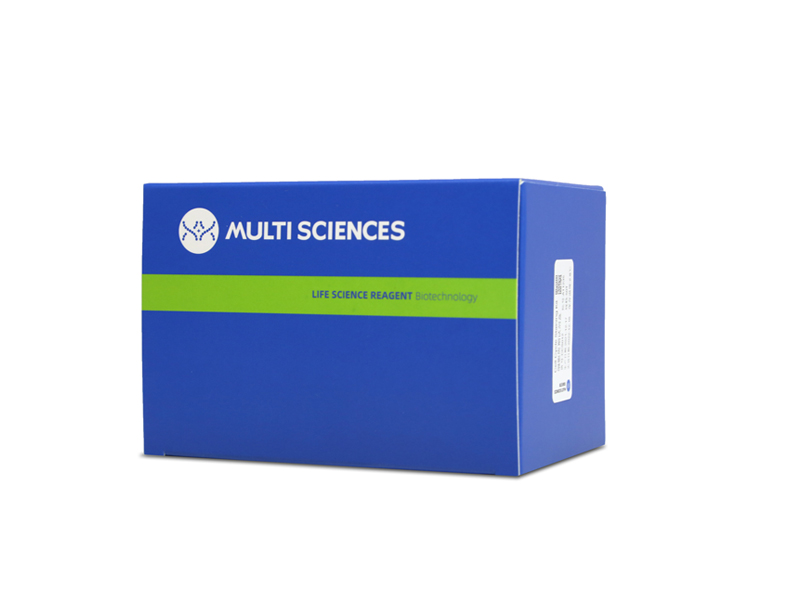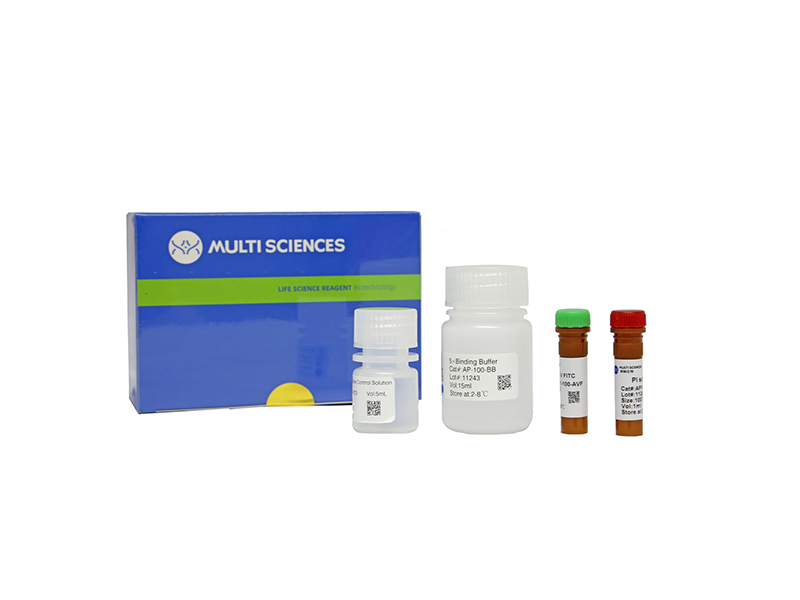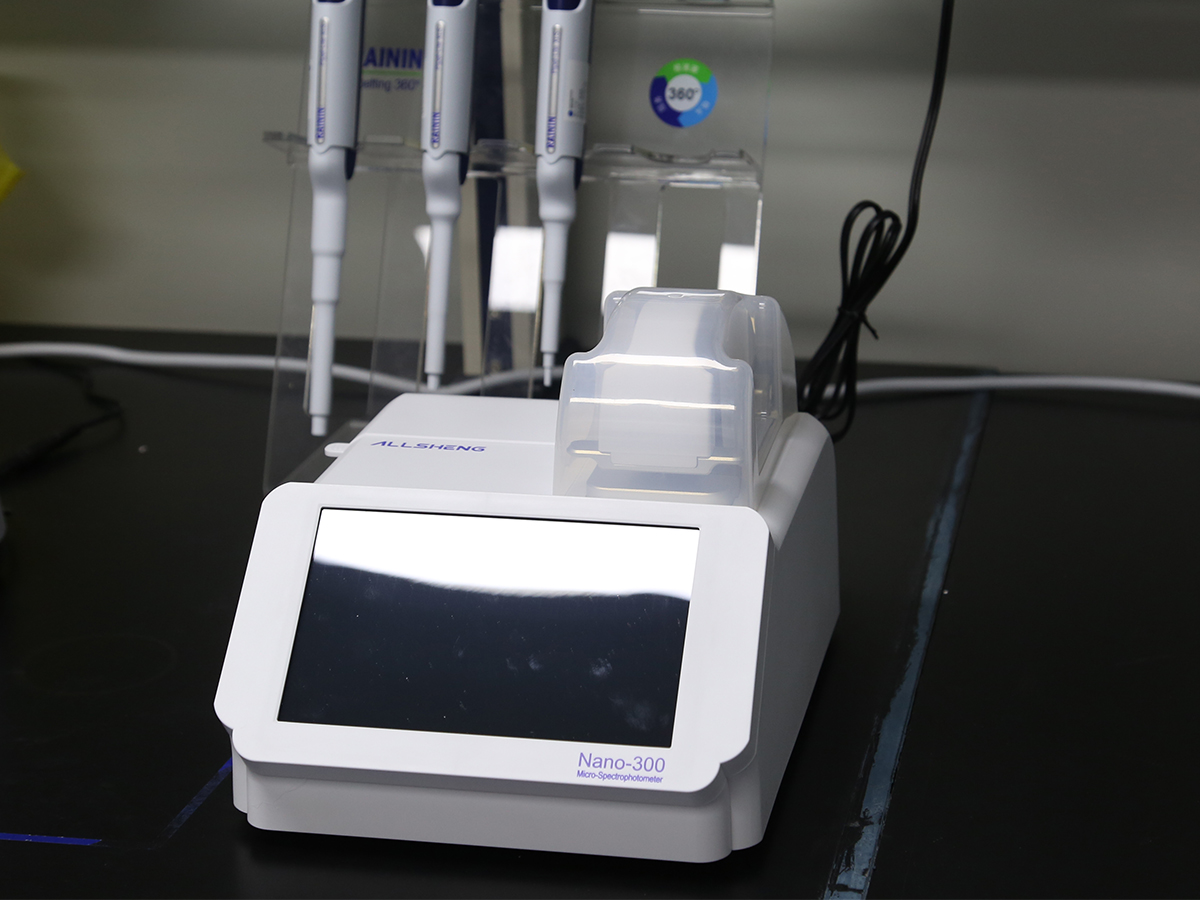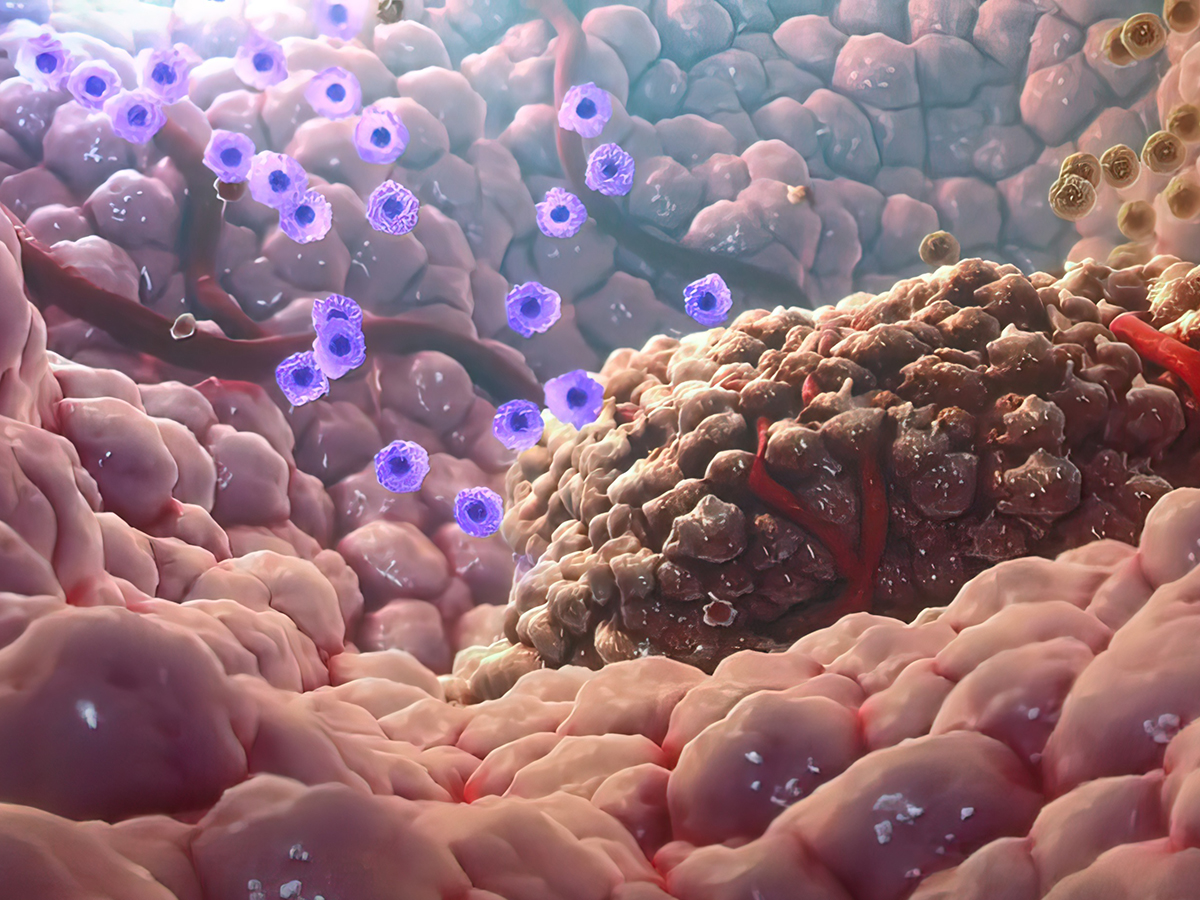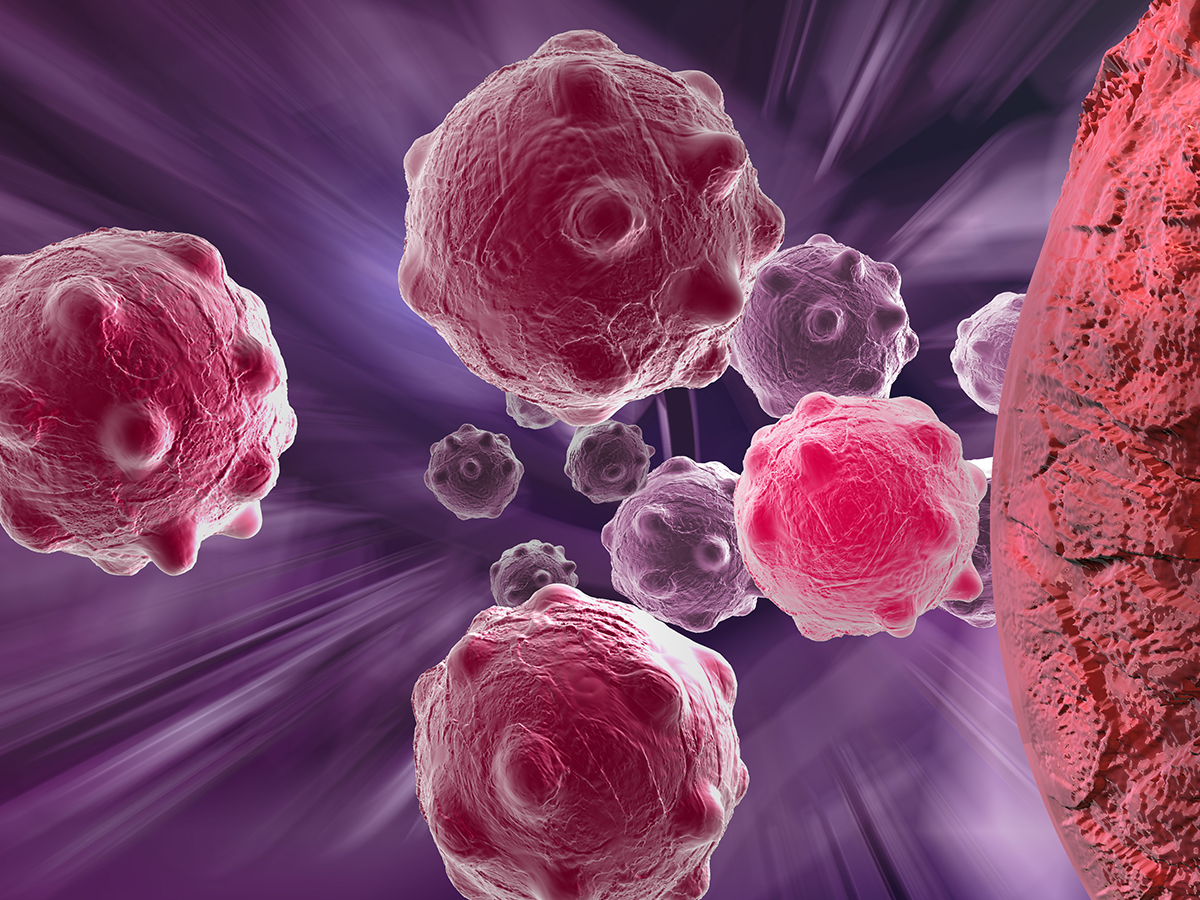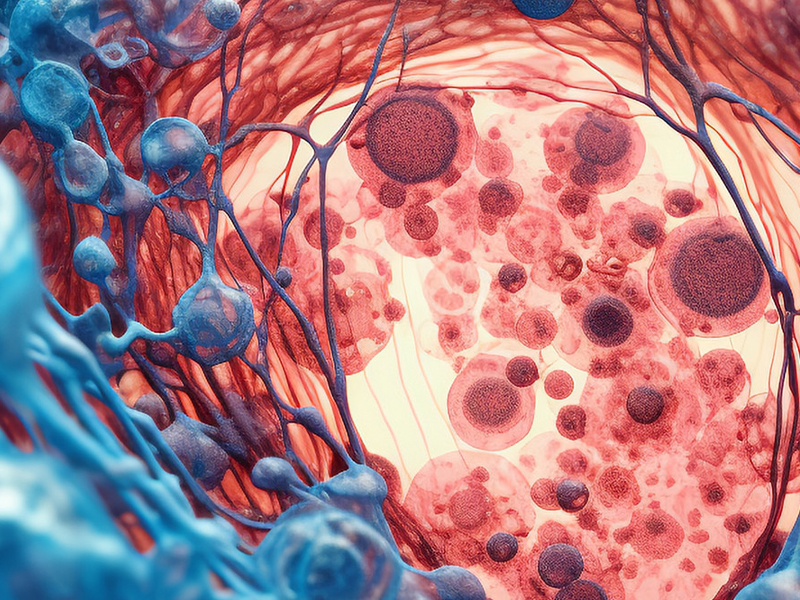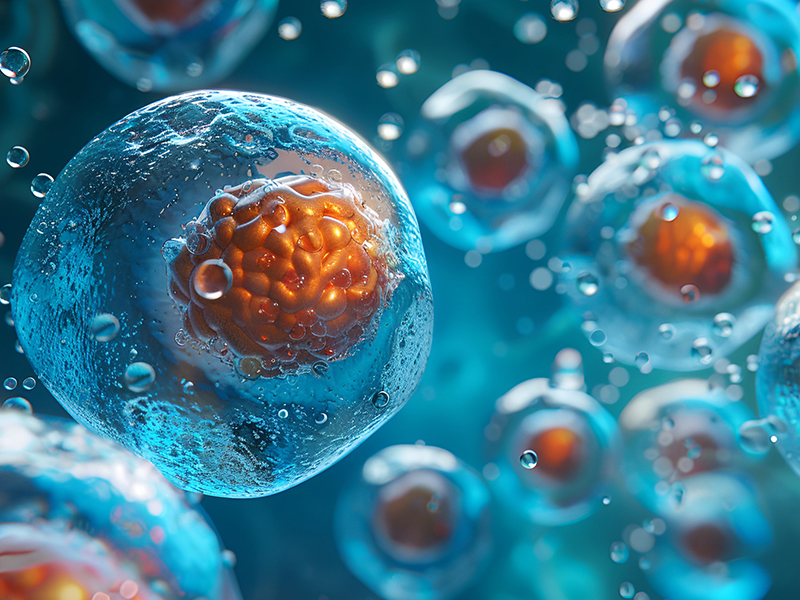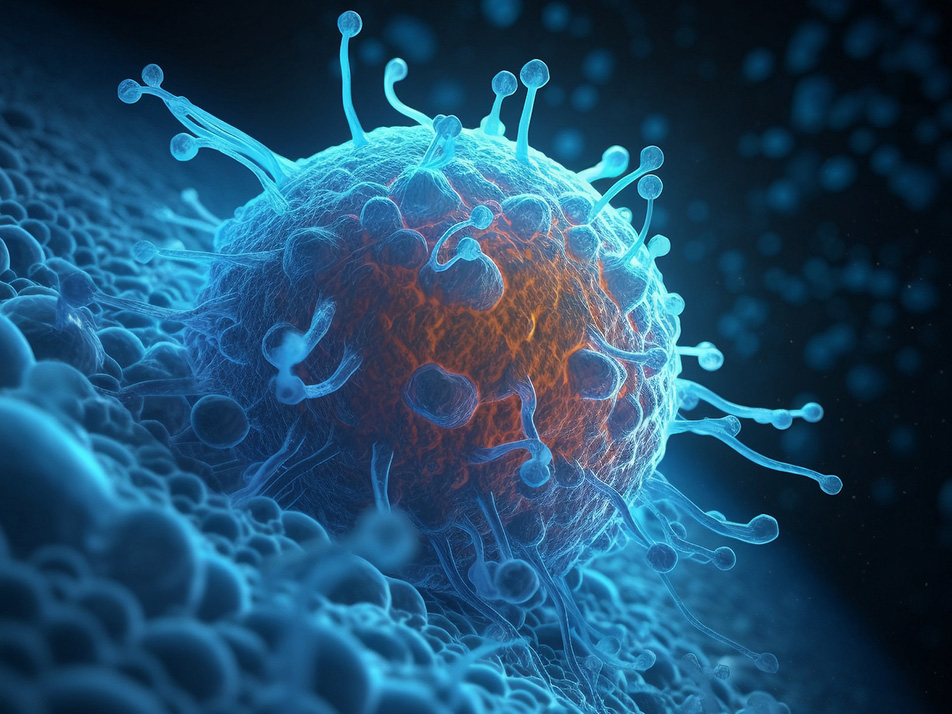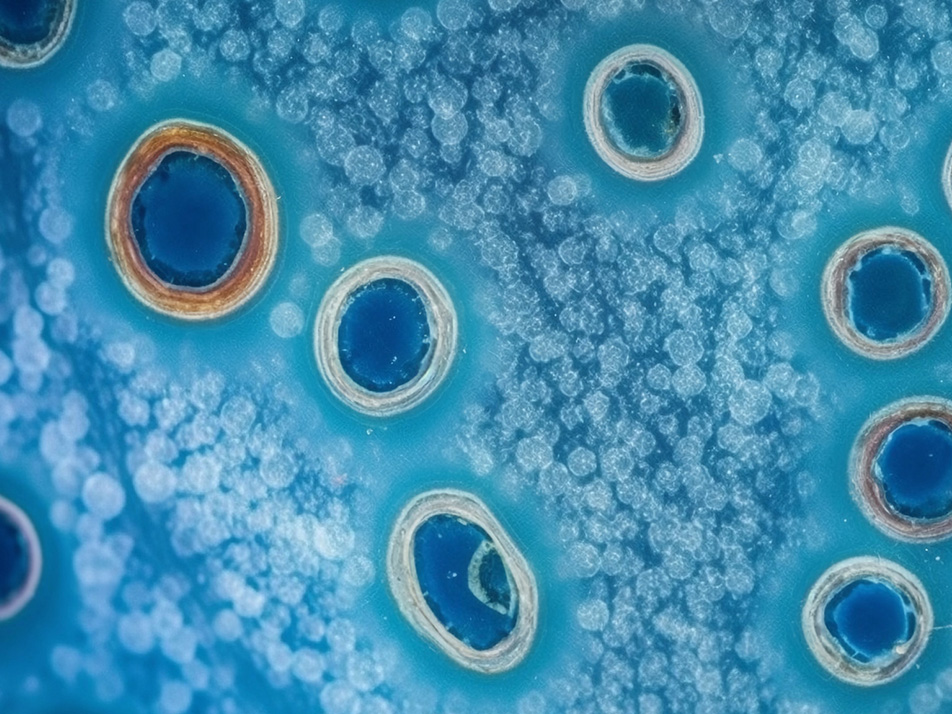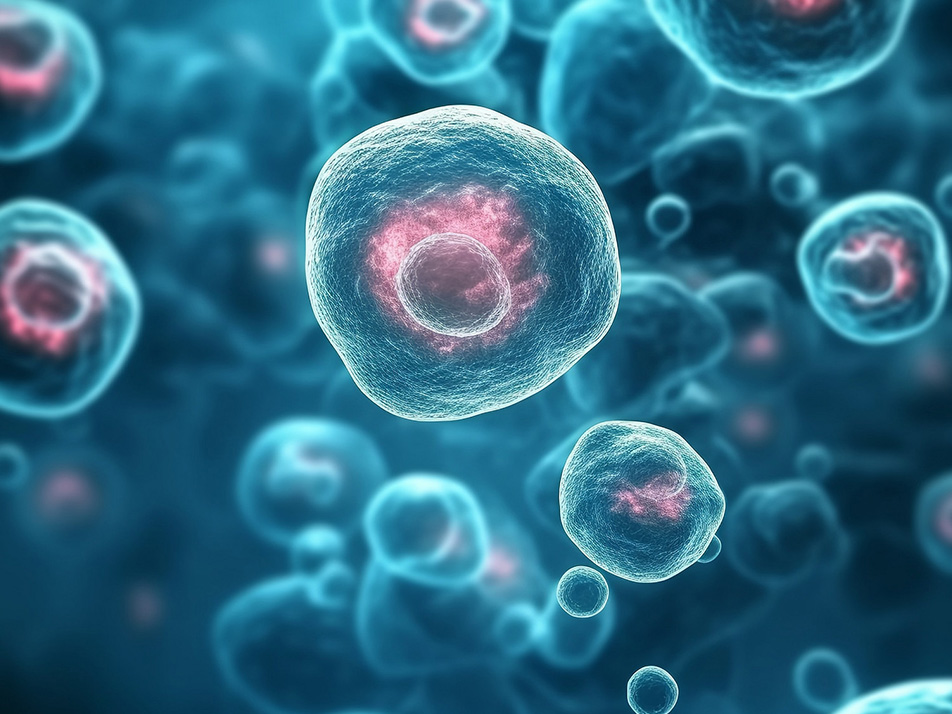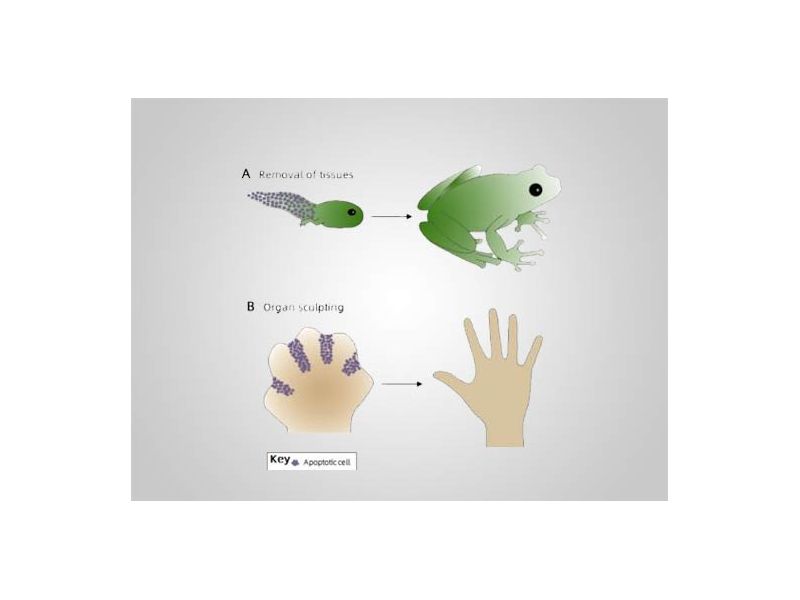AT105
Annexin V-APC/7-AAD Apoptosis Kit(细胞凋亡试剂盒 - 贴壁细胞专用)
¥1,010.00 – ¥2,090.00
在售SKU:70-AT105-30, 70-AT105-60, 70-AT105-100, 凋亡, 细胞凋亡, 凋亡试剂盒, 细胞凋亡试剂盒, 凋亡检测, 细胞凋亡检测, 凋亡检测试剂盒, 细胞凋亡检测试剂盒, Annexin V, Annexin, Apoptosis, 贴壁, 贴壁细胞, 贴壁细胞专用
描述
产品简介
Annexin V(或 Annexin A5)为胞内蛋白膜联蛋白家族成员,以钙依赖的方式与磷脂酰丝氨酸(PS)结合。PS 存在于正常细胞浆膜的内层,但在凋亡早期,膜不对称性丧失,PS易位至细胞表面。荧光标记的 Annexin V 可与之特异性结合,表明该细胞为凋亡细胞。
Accutase是一种天然的酶,兼具蛋白水解酶和胶原酶的活性。但它比胰酶和胶原酶更有效,使用浓度更低,使之毒性更小、更温和。因此对细胞的损伤更小,可减少因消化处理带来的假阳性。即便长时间消化,也可保持90%以上的细胞活力。适合于各种贴壁细胞、胚胎和神经元干细胞等较敏感的细胞的消化。
产品特点
- 操作简便,15分钟即可完成染色;
- 分群清晰,结果稳定可靠;
- 独家搭配阳性质控液,补偿调节不再困难;
- 提供Accutase Enzyme,适用于贴壁细胞。
结果示例

试剂盒组分
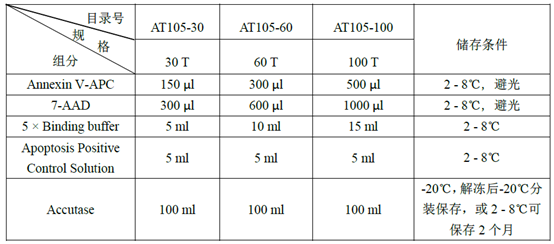
引用文献统计
该产品被引用的文献总数为:187
- NUP210 and MicroRNA-22 Modulate Fas to Elicit HeLa Cell Cycle Arrest
影响因子:1.914刊物:YONSEI MEDICAL JOURNAL发表日期:2020/4/24 - Doxorubicin-polyglycerol-nanodiamond conjugate is a cytostatic agent that evades chemoresistance and reverses cancer-induced immunosuppression in triple-negative breast cancer
影响因子:5.345刊物:JOURNAL OF NANOBIOTECHNOLOGY发表日期:2019/10/17 - Fucoidan inhibits EGFR redistribution and potentiates sorafenib to overcome sorafenib-resistant hepatocellular carcinoma
影响因子:7.419刊物:BIOMEDICINE & PHARMACOTHERAPY发表日期:2022/8/24 - High expression of G-protein signaling modulator 2 in hepatocellular carcinoma facilitates tumor growth and metastasis by activating the PI3K/AKT signaling pathway
影响因子:3.65刊物:TUMOR BIOLOGY发表日期:2017/3/28 - Xylopins A–F, six rare guaiane dimers with three different connecting modes from Xylopia vielana
影响因子:3.049刊物:RSC Advances发表日期:2019/3/21 - Vieloplains A-G, seven new guaiane-type sesquiterpenoid dimers from Xylopia vielana
影响因子:3.926刊物:BIOORGANIC CHEMISTRY发表日期:2019/4/10 - S100A16 suppresses the growth and survival of leukaemia cells and correlates with relapse and relapse free survival in adults with Philadelphia chromosome-negative B-cell acute lymphoblastic leukaemia
影响因子:5.206刊物:BRITISH JOURNAL OF HAEMATOLOGY发表日期:2019/3/27 - miR-363-3p inhibits tumor growth by targeting PCNA in lung adenocarcinoma
影响因子:5.168刊物:Oncotarget发表日期:2017/2/17 - Overexpression of CXCL2 inhibits cell proliferation and promotes apoptosis in hepatocellular carcinoma
影响因子:3.085刊物:BMB Reports发表日期:2018/12/31 - CAMKIIγ is a targetable driver of multiple myeloma through CaMKIIγ/ Stat3 axis
影响因子:4.831刊物:Aging-US发表日期:2020/7/13 - PADI6 Regulates Trophoblast Cell Migration-Invasion Through the Hippo/YAP1 Pathway in Hydatidiform Moles
影响因子:6.922刊物:Journal of Inflammation Research发表日期:2021/7/22 - Long non-coding RNA00844 inhibits MAPK signaling to suppress the progression of hepatocellular carcinoma by targeting AZGP1
影响因子:3.297刊物:Annals of Translational Medicine发表日期:2020/11/1 - The resistant effect of SIRT1 in oxidative stress-induced senescence of rat nucleus pulposus cell is regulated by Akt-FoxO1 pathway
影响因子:2.535刊物:BIOSCIENCE REPORTS发表日期:2019/5/10 - PARK2 Suppresses Proliferation and Tumorigenicity in Non-small Cell Lung Cancer
影响因子:4.137刊物:Frontiers in Oncology发表日期:2019/8/23 - Identification and Verification of a Novel MAGI2-AS3/miRNA-374-5p/FOXO1 Network Associated with HBV-Related HCC
影响因子:7.666刊物:Cells发表日期:2022/11/2 - Repair of the Urethral Mucosa Defect Model Using Adipose-Derived Stem Cell Sheets and Monitoring the Fate of Indocyanine Green-Labeled Sheets by Near Infrared-II
影响因子:5.395刊物:ACS Biomaterials Science & Engineering发表日期:2022/10/6 - SARS-CoV-2 ORF3a inhibits cGAS-STING-mediated autophagy flux and antiviral function
影响因子:20.693刊物:JOURNAL OF MEDICAL VIROLOGY发表日期:2022/9/26 - UHRF1 plays an oncogenic role in small cell lung cancer
影响因子:5.139刊物:MOLECULAR CARCINOGENESIS发表日期:2022/12/20 - GBP3 promotes glioblastoma resistance to temozolomide by enhancing DNA damage repair
影响因子:8.756刊物:ONCOGENE发表日期:2022/7/2 - TGF-β/Smad Signalling Activation by HTRA1 Regulates the Function of Human Lens Epithelial Cells and Its Mechanism in Posterior Subcapsular Congenital Cataract
影响因子:6.208刊物:INTERNATIONAL JOURNAL OF MOLECULAR SCIENCES发表日期:2022/11/20 - Acetyl-CoA carboxylase 1 depletion suppresses de novo fatty acid synthesis and mitochondrial β-oxidation in castration-resistant prostate cancer cells
影响因子:5.486刊物:JOURNAL OF BIOLOGICAL CHEMISTRY发表日期:2022/11/19 - Nrf2 Inhibits the Progression of Parkinson’s Disease by Upregulating AABR07032261.5 to Repress Pyroptosis
影响因子:4.631刊物:Journal of Inflammation Research发表日期:2022/9/17 - MiR-155-5p suppresses SOX1 to promote proliferation of cholangiocarcinoma via RAF/MEK/ERK pathway
影响因子:5.722刊物:Cancer Cell International发表日期:2021/12/7 - Leucine zipper downregulated in cancer 1 may serve as a favorable prognostic biomarker by influencing proliferation, colony formation, cell cycle, apoptosis, and migration ability in hepatocellular carcinoma
影响因子:4.772刊物:Frontiers in Genetics发表日期:2022/7/25 - Hydroxychloroquine repairs burn damage through the Wnt/β-catenin pathway
影响因子:5.168刊物:CHEMICO-BIOLOGICAL INTERACTIONS发表日期:2022/12/17 - MiR-1976 knockdown promotes epithelial–mesenchymal transition and cancer stem cell properties inducing triple-negative breast cancer metastasis
影响因子:6.304刊物:Cell Death & Disease发表日期:2020/7/3 - Overexpressed Hsp70 alleviated formaldehyde-induced apoptosis partly via PI3K/Akt signaling pathway in human bronchial epithelial cells
影响因子:2.649刊物:ENVIRONMENTAL TOXICOLOGY发表日期:2019/1/2 - Pomelo polysaccharide extract inhibits oxidative stress, inflammation, and mitochondrial apoptosis of Epinephelus coioides
影响因子:4.242刊物:AQUACULTURE发表日期:2021/6/12 - ILC2-derived IL-9 inhibits colorectal cancer progression by activating CD8+ T cells
影响因子:8.679刊物:CANCER LETTERS发表日期:2021/1/9 - Combined overexpression of four transcription factors promotes effector T cell dedifferentiation toward early phenotypes
影响因子:3.33刊物:IMMUNOGENETICS发表日期:2022/1/10 - Overexpression of early T cell differentiation-specific transcription factors transforms the terminally differentiated effector T cells into less differentiated state
影响因子:4.078刊物:CELLULAR IMMUNOLOGY发表日期:2020/5/6 - HOXA5 inhibits the proliferation of extrahepatic cholangiocarcinoma cells by enhancing MXD1 expression and activating the p53 pathway
影响因子:9.685刊物:Cell Death & Disease发表日期:2022/9/27 - The Novel Protein ADAMTS16 Promotes Gastric Carcinogenesis by Targeting IFI27 through the NF-κb Signaling Pathway
影响因子:6.208刊物:INTERNATIONAL JOURNAL OF MOLECULAR SCIENCES发表日期:2022/9/20 - Curcumin Has Anti-Proliferative and Pro-Apoptotic Effects on Tongue Cancer in vitro: A Study with Bioinformatics Analysis and in vitro Experiments
影响因子:4.319刊物:Drug Design Development and Therapy发表日期:2022/10/31 - BI6727, a polo-like kinase 1 inhibitor with promising efficacy on Burkitt lymphoma cells
影响因子:1.287刊物:JOURNAL OF INTERNATIONAL MEDICAL RESEARCH发表日期:2020/5/29 - Overexpressed MPS-1 contributes to endometrioma development through the NF-κB signaling pathway
影响因子:5.211刊物:Reproductive Biology and Endocrinology发表日期:2021/7/15 - Reduced apurinic/apyrimidinic endonuclease activity enhances the antitumor activity of oxymatrine in lung cancer cells
影响因子:3.018刊物:INTERNATIONAL JOURNAL OF ONCOLOGY发表日期:2016/10/14 - Downregulation of ZMYND11 induced by miR-196a-5p promotes the progression and growth of GBM
影响因子:2.466刊物:BIOCHEMICAL AND BIOPHYSICAL RESEARCH COMMUNICATIONS发表日期:2017/10/21 - Casein kinase 1α inhibits p53 downstream of MDM2‑mediated autophagy and apoptosis in acute myeloid leukemia
影响因子:3.417刊物:ONCOLOGY REPORTS发表日期:2020/9/9 - Blocking Triggering Receptor Expressed on Myeloid Cells-1-Positive Tumor-Associated Macrophages Induced by Hypoxia Reverses Immunosuppression and Anti-Programmed Cell Death Ligand 1 Resistance in Liver Cancer
影响因子:14.971刊物:HEPATOLOGY发表日期:2019/2/27 - ANXA1 (Annexin A1) regulated by MYC (MYC proto-oncogene) promotes the growth of papillary thyroid carcinoma
影响因子:3.269刊物:Bioengineered发表日期:2021/12/27 - Kidney Toxicity and Response of Selenium Containing Protein-glutathione Peroxidase (Gpx3) to CdTe QDs on Different Levels
影响因子:4.181刊物:TOXICOLOGICAL SCIENCES发表日期:2018/12/10 - Dysregulated lncRNA-UCA1 contributes to the progression of gastric cancer through regulation of the PI3K-Akt-mTOR signaling pathway
影响因子:5.168刊物:Oncotarget发表日期:2017/7/17 - A IFI27 gene contributes to ER-stress mediated apoptosis and benefits for white spot syndrome virus infection in Litopenaeus vannamei
影响因子:4.581刊物:FISH & SHELLFISH IMMUNOLOGY发表日期:2021/11/25 - Interleukin-20 differentially regulates bone mesenchymal stem cell activities in RANKL-induced osteoclastogenesis through the OPG/RANKL/RANK axis and the NF-κB, MAPK and AKT signalling pathways
影响因子:2.717刊物:SCANDINAVIAN JOURNAL OF IMMUNOLOGY发表日期:2020/2/23 - Berberine-photodynamic therapy sensitizes melanoma cells to cisplatin-induced apoptosis through ROS-mediated P38 MAPK pathways
影响因子:4.219刊物:TOXICOLOGY AND APPLIED PHARMACOLOGY发表日期:2021/3/11 - Upregulation of CD44v6 contributes to acquired chemoresistance via the modulation of autophagy in colon cancer SW480 cells
影响因子:2.926刊物:TUMOR BIOLOGY发表日期:2016/1/9 - α-Tomatine, a novel early-stage autophagy inhibitor, inhibits autophagy to enhance apoptosis via Beclin-1 in Skov3 cells
影响因子:2.882刊物:FITOTERAPIA发表日期:2021/4/24 - Modification of Mcl-1 alternative splicing induces apoptosis and suppresses tumor proliferation in gastric cancer
影响因子:4.831刊物:Aging-US发表日期:2020/10/14 - c-Myc induced upregulation of long non-coding RNA SNHG16 enhances progression and carcinogenesis in oral squamous cell carcinoma
影响因子:4.681刊物:CANCER GENE THERAPY发表日期:2019/1/4 - GW4064 enhances the chemosensitivity of colorectal cancer to oxaliplatin by inducing pyroptosis
影响因子:3.575刊物:BIOCHEMICAL AND BIOPHYSICAL RESEARCH COMMUNICATIONS发表日期:2021/2/22 - ROS-mediated inactivation of the PI3K/AKT pathway is involved in the antigastric cancer effects of thioredoxin reductase-1 inhibitor chaetocin
影响因子:5.959刊物:Cell Death & Disease发表日期:2019/10/24 - Expression of long non-coding RNA SFTA1P and its function in non-small cell lung cancer
影响因子:2.05刊物:PATHOLOGY RESEARCH AND PRACTICE发表日期:2020/6/6 - Polysaccharide extract from pomelo fruitlet ameliorates diet-induced nonalcoholic fatty liver disease in hybrid grouper (Epinephelus lanceolatus♂ × Epinephelus fuscoguttatus♀)
影响因子:4.581刊物:FISH & SHELLFISH IMMUNOLOGY发表日期:2021/10/1 - Nickle(II) ions exacerbate bleomycin-induced pulmonary inflammation and fibrosis by activating the ROS/Akt signaling pathway
影响因子:2.741刊物:ENVIRONMENTAL SCIENCE AND POLLUTION RESEARCH发表日期:2017/11/28 - Knockdown of Microtubule Associated Serine/threonine Kinase Like Expression Inhibits Gastric Cancer Cell Growth and Induces Apoptosis by Activation of ERK1/2 and Inactivation of NF-κB Signaling
影响因子:2.135刊物:Current Medical Science发表日期:2021/2/13 - Mannose ameliorates experimental colitis by protecting intestinal barrier integrity
影响因子:17.694刊物:Nature Communications发表日期:2022/8/16 - SMYD2 Promotes Hepatocellular Carcinoma Progression by Reprogramming Glutamine Metabolism via c-Myc/GLS1 Axis
影响因子:7.666刊物:Cells发表日期:2022/12/21 - Mannan-binding lectin attenuates acetaminophen-induced hepatotoxicity by regulating CYP2E1 expression via ROS-dependent JNK/SP1 pathway
影响因子:4.695刊物:EUROPEAN JOURNAL OF IMMUNOLOGY发表日期:2019/2/1 - POU4F3 Acts as a Tumor Suppressor in Lung Adenocarcinoma via the Endoplasmic Reticulum Stress Signaling Pathway
影响因子:4.478刊物:Journal of Cancer发表日期:2022/1/1 - Cytotoxicity of perfluorodecanoic acid on mouse primary nephrocytes through oxidative stress: Combined analysis at cellular and molecular levels
影响因子:9.038刊物:JOURNAL OF HAZARDOUS MATERIALS发表日期:2020/3/2 - LncRNA-uc002mbe.2 Interacting with hnRNPA2B1 Mediates AKT Deactivation and p21 Up-Regulation Induced by Trichostatin in Liver Cancer Cells
影响因子:4.4刊物:Frontiers in Pharmacology发表日期:2017/9/25 - MiR-221/222 Ameliorates Deoxynivalenol-Induced Apoptosis and Proliferation Inhibition in Intestinal Epithelial Cells by Targeting PTEN
影响因子:6.684刊物:Frontiers in Cell and Developmental Biology发表日期:2021/5/19 - Construction of a tumor microenvironment pH-responsive cleavable PEGylated hyaluronic acid nano-drug delivery system for colorectal cancer treatment
影响因子:6.183刊物:Biomaterials Science发表日期:2020/1/20 - Insulin-like growth factor binding protein-1 regulates HIF-1α degradation to inhibit apoptosis in hypoxic cardiomyocytes
影响因子:5.241刊物:Cell Death Discovery发表日期:2021/9/16 - Effects of GPR81 silencing combined with cisplatin stimulation on biological function in hypopharyngeal squamous cell carcinoma
影响因子:2.1刊物:Molecular Medicine Reports发表日期:2020/6/18 - Hyperhomocysteinemia Exacerbates Cisplatin-induced Acute Kidney Injury
影响因子:3.873刊物:International Journal of Biological Sciences发表日期:2017/2/6 - The role of Melatonin receptor MTNR1A in the action of Melatonin on bovine granulosa cells
影响因子:2.316刊物:MOLECULAR REPRODUCTION AND DEVELOPMENT发表日期:2017/8/14 - GADD45B mediates podocyte injury in zebrafish by activating the ROS-GADD45B-p38 pathway
影响因子:5.378刊物:Cell Death & Disease发表日期:2016/1/21 - Mycn regulates intestinal development through ribosomal biogenesis in a zebrafish model of Feingold syndrome 1
影响因子:9.593刊物:PLOS BIOLOGY发表日期:2022/11/1 - Co‑inhibition of BMI1 and Mel18 enhances chemosensitivity of esophageal squamous cell carcinoma in vitro and in vivo
影响因子:1.871刊物:Oncology Letters发表日期:2019/3/19 - TRPM8 facilitates proliferation and immune evasion of esophageal cancer cells
影响因子:2.535刊物:BIOSCIENCE REPORTS发表日期:2019/10/11 - Klotho attenuated Doxorubicin-induced cardiomyopathy by alleviating Dynamin-related protein 1 - mediated mitochondrial dysfunction
影响因子:5.432刊物:MECHANISMS OF AGEING AND DEVELOPMENT发表日期:2021/2/1 - Tumor Necrosis Factor Receptor-Associated Protein 1 Protects against Mitochondrial Injury by Preventing High Glucose-Induced mPTP Opening in Diabetes
影响因子:5.076刊物:Oxidative Medicine and Cellular Longevity发表日期:2020/3/6 - Silencing circFTO inhibits malignant phenotype through modulating DUSP4 expression in clear cell renal cell carcinoma
影响因子:7.109刊物:Cell Death Discovery发表日期:2022/9/20 - Panax notoginseng saponins reduces the cisplatin-induced acute renal injury by increasing HIF-1α/BNIP3 to inhibit mitochondrial apoptosis pathway
影响因子:6.53刊物:BIOMEDICINE & PHARMACOTHERAPY发表日期:2021/8/9 - Exosome-derived circTRPS1 promotes malignant phenotype and CD8+ T cell exhaustion in bladder cancer microenvironments
影响因子:12.91刊物:MOLECULAR THERAPY发表日期:2022/1/14 - New insights into the release mechanism of Cd2+ from CdTe quantum dots within single cells in situ
影响因子:4.872刊物:ECOTOXICOLOGY AND ENVIRONMENTAL SAFETY发表日期:2020/4/8 - Expression levels of the α7 nicotinic acetylcholine receptor in the brains of patients with Alzheimer's disease and their effect on synaptic proteins in SH-SY5Y cells
影响因子:2.1刊物:Molecular Medicine Reports发表日期:2020/6/18 - ZNRF3 Regulates Collagen-Induced Arthritis Through NF-kB and Wnt Pathways
影响因子:3.212刊物:INFLAMMATION发表日期:2020/3/3 - 3‑Bromopyruvic acid regulates glucose metabolism by targeting the c‑Myc/TXNIP axis and induces mitochondria‑mediated apoptosis in TNBC cells
影响因子:2.751刊物:Experimental and Therapeutic Medicine发表日期:2022/6/16 - Blockage of Extracellular Signal-Regulated Kinase Exerts an Antitumor Effect via Regulating Energy Metabolism and Enhances the Efficacy of Autophagy Inhibitors by Regulating Transcription Factor EB Nuclear Translocation in Osteosarcoma
影响因子:6.684刊物:Frontiers in Cell and Developmental Biology发表日期:2021/8/3 - RNA-binding protein RBM6 as a tumor suppressor gene represses the growth and progression in laryngocarcinoma
影响因子:2.638刊物:GENE发表日期:2019/2/15 - β-8-Oxoguanine DNA Glycosylase Overexpression Reduces Oxidative Stress-Induced Mitochondrial Dysfunction and Apoptosis Through the JNK Signaling Pathway in Human Bronchial Epithelial Cells
影响因子:2.236刊物:DNA AND CELL BIOLOGY发表日期:2017/12/1 - Decreased expression of MRE11 and RAD50 in testes from humans with spermatogenic failure
影响因子:2.829刊物:JOURNAL OF ASSISTED REPRODUCTION AND GENETICS发表日期:2020/1/25 - The antitumor effect of the novel agent MCL/ACT001 in pancreatic ductal adenocarcinoma
影响因子:4.322刊物:JOURNAL OF CANCER RESEARCH AND CLINICAL ONCOLOGY发表日期:2022/12/22 - Acyl-CoA Thioesterase 7 is Transcriptionally Activated by Krüppel-Like Factor 13 and Promotes the Progression of Hepatocellular Carcinoma
影响因子:4.962刊物:Journal of Hepatocellular Carcinoma发表日期:2022/11/14 - Morinda citrifolia (Noni) Juice Suppresses A549 Human Lung Cancer Cells via Inhibiting AKT/Nuclear Factor-κ B Signaling Pathway
影响因子:1.545刊物:Chinese Journal of Integrative Medicine发表日期:2020/7/9 - β-Elemene alleviates cisplatin resistance in oral squamous cell carcinoma cell via inhibiting JAK2/STAT3 pathway in vitro and in vivo
影响因子:6.429刊物:Cancer Cell International发表日期:2022/7/31 - Effect of Lentivirus-Mediated miR-499a-3p on Human Umbilical Vein Endothelial Cells
影响因子:2.276刊物:Biomed Research International发表日期:2020/8/26 - H. pylori CagA activates the NLRP3 inflammasome to promote gastric cancer cell migration and invasion
影响因子:4.575刊物:INFLAMMATION RESEARCH发表日期:2021/12/2 - Key Genes And Pathways Controlled By E2F1 In Human Castration-Resistant Prostate Cancer Cells
影响因子:3.046刊物:OncoTargets and Therapy发表日期:2019/10/31 - Long intergenic non-coding RNA 511 correlates with improved prognosis, and hinders osteosarcoma progression both in vitro and in vivo
影响因子:1.54刊物:JOURNAL OF CLINICAL LABORATORY ANALYSIS发表日期:2020/1/1 - miR-4443 promotes radiation resistance of esophageal squamous cell carcinoma via targeting PTPRJ
影响因子:8.44刊物:Journal of Translational Medicine发表日期:2022/12/28 - The Combination of Icotinib Hydrochloride and Fluzoparib Enhances the Radiosensitivity of Biliary Tract Cancer Cells
影响因子:2.886刊物:Cancer Management and Research发表日期:2020/11/19 - PGM1 suppresses colorectal cancer cell migration and invasion by regulating the PI3K/AKT pathway
影响因子:6.429刊物:Cancer Cell International发表日期:2022/5/25 - IL-2Rα up-regulation is mediated by latent membrane protein 1 and promotes lymphomagenesis and chemotherapy resistance in natural killer/T-cell lymphoma
刊物:Cancer Communications发表日期:2018/10/19 - Calculated identification of mutator-derived lncRNA signatures of genomic instability to predict the clinical outcome of muscle-invasive bladder cancer
影响因子:5.722刊物:Cancer Cell International发表日期:2021/9/8 - Regulatory coupling between long noncoding RNAs and senescence in irradiated microglia
影响因子:5.793刊物:Journal of Neuroinflammation发表日期:2020/10/28 - Down regulated oncogene KIF2C inhibits growth, invasion, and metastasis of hepatocellular carcinoma through the Ras/MAPK signaling pathway and epithelial-to-mesenchymal transition
影响因子:3.616刊物:Annals of Translational Medicine发表日期:2022/2/1
凋亡试剂盒操作常见问题查看更多凋亡试剂盒操作步骤技术文章
查看更多凋亡试剂盒操作步骤技术文章
引用文献
文章目录[隐藏]
- NUP210 and MicroRNA-22 Modulate Fas to Elicit HeLa Cell Cycle Arrest
- Doxorubicin-polyglycerol-nanodiamond conjugate is a cytostatic agent that evades chemoresistance and reverses cancer-induced immunosuppression in triple-negative breast cancer
- Fucoidan inhibits EGFR redistribution and potentiates sorafenib to overcome sorafenib-resistant hepatocellular carcinoma
- High expression of G-protein signaling modulator 2 in hepatocellular carcinoma facilitates tumor growth and metastasis by activating the PI3K/AKT signaling pathway
- Xylopins A–F, six rare guaiane dimers with three different connecting modes from Xylopia vielana
- Vieloplains A-G, seven new guaiane-type sesquiterpenoid dimers from Xylopia vielana
- S100A16 suppresses the growth and survival of leukaemia cells and correlates with relapse and relapse free survival in adults with Philadelphia chromosome-negative B-cell acute lymphoblastic leukaemia
- miR-363-3p inhibits tumor growth by targeting PCNA in lung adenocarcinoma
- Overexpression of CXCL2 inhibits cell proliferation and promotes apoptosis in hepatocellular carcinoma
- CAMKIIγ is a targetable driver of multiple myeloma through CaMKIIγ/ Stat3 axis
- PADI6 Regulates Trophoblast Cell Migration-Invasion Through the Hippo/YAP1 Pathway in Hydatidiform Moles
- Long non-coding RNA00844 inhibits MAPK signaling to suppress the progression of hepatocellular carcinoma by targeting AZGP1
- The resistant effect of SIRT1 in oxidative stress-induced senescence of rat nucleus pulposus cell is regulated by Akt-FoxO1 pathway
- PARK2 Suppresses Proliferation and Tumorigenicity in Non-small Cell Lung Cancer
- Identification and Verification of a Novel MAGI2-AS3/miRNA-374-5p/FOXO1 Network Associated with HBV-Related HCC
- Repair of the Urethral Mucosa Defect Model Using Adipose-Derived Stem Cell Sheets and Monitoring the Fate of Indocyanine Green-Labeled Sheets by Near Infrared-II
- SARS-CoV-2 ORF3a inhibits cGAS-STING-mediated autophagy flux and antiviral function
- UHRF1 plays an oncogenic role in small cell lung cancer
- GBP3 promotes glioblastoma resistance to temozolomide by enhancing DNA damage repair
- TGF-β/Smad Signalling Activation by HTRA1 Regulates the Function of Human Lens Epithelial Cells and Its Mechanism in Posterior Subcapsular Congenital Cataract
- Acetyl-CoA carboxylase 1 depletion suppresses de novo fatty acid synthesis and mitochondrial β-oxidation in castration-resistant prostate cancer cells
- Nrf2 Inhibits the Progression of Parkinson’s Disease by Upregulating AABR07032261.5 to Repress Pyroptosis
- MiR-155-5p suppresses SOX1 to promote proliferation of cholangiocarcinoma via RAF/MEK/ERK pathway
- Leucine zipper downregulated in cancer 1 may serve as a favorable prognostic biomarker by influencing proliferation, colony formation, cell cycle, apoptosis, and migration ability in hepatocellular carcinoma
- Hydroxychloroquine repairs burn damage through the Wnt/β-catenin pathway
- MiR-1976 knockdown promotes epithelial–mesenchymal transition and cancer stem cell properties inducing triple-negative breast cancer metastasis
- Overexpressed Hsp70 alleviated formaldehyde-induced apoptosis partly via PI3K/Akt signaling pathway in human bronchial epithelial cells
- Pomelo polysaccharide extract inhibits oxidative stress, inflammation, and mitochondrial apoptosis of Epinephelus coioides
- ILC2-derived IL-9 inhibits colorectal cancer progression by activating CD8+ T cells
- Combined overexpression of four transcription factors promotes effector T cell dedifferentiation toward early phenotypes
- Overexpression of early T cell differentiation-specific transcription factors transforms the terminally differentiated effector T cells into less differentiated state
- HOXA5 inhibits the proliferation of extrahepatic cholangiocarcinoma cells by enhancing MXD1 expression and activating the p53 pathway
- The Novel Protein ADAMTS16 Promotes Gastric Carcinogenesis by Targeting IFI27 through the NF-κb Signaling Pathway
- Curcumin Has Anti-Proliferative and Pro-Apoptotic Effects on Tongue Cancer in vitro: A Study with Bioinformatics Analysis and in vitro Experiments
- BI6727, a polo-like kinase 1 inhibitor with promising efficacy on Burkitt lymphoma cells
- Overexpressed MPS-1 contributes to endometrioma development through the NF-κB signaling pathway
- Reduced apurinic/apyrimidinic endonuclease activity enhances the antitumor activity of oxymatrine in lung cancer cells
- Downregulation of ZMYND11 induced by miR-196a-5p promotes the progression and growth of GBM
- Casein kinase 1α inhibits p53 downstream of MDM2‑mediated autophagy and apoptosis in acute myeloid leukemia
- Blocking Triggering Receptor Expressed on Myeloid Cells-1-Positive Tumor-Associated Macrophages Induced by Hypoxia Reverses Immunosuppression and Anti-Programmed Cell Death Ligand 1 Resistance in Liver Cancer
- ANXA1 (Annexin A1) regulated by MYC (MYC proto-oncogene) promotes the growth of papillary thyroid carcinoma
- Kidney Toxicity and Response of Selenium Containing Protein-glutathione Peroxidase (Gpx3) to CdTe QDs on Different Levels
- Dysregulated lncRNA-UCA1 contributes to the progression of gastric cancer through regulation of the PI3K-Akt-mTOR signaling pathway
- A IFI27 gene contributes to ER-stress mediated apoptosis and benefits for white spot syndrome virus infection in Litopenaeus vannamei
- Interleukin-20 differentially regulates bone mesenchymal stem cell activities in RANKL-induced osteoclastogenesis through the OPG/RANKL/RANK axis and the NF-κB, MAPK and AKT signalling pathways
- Berberine-photodynamic therapy sensitizes melanoma cells to cisplatin-induced apoptosis through ROS-mediated P38 MAPK pathways
- Upregulation of CD44v6 contributes to acquired chemoresistance via the modulation of autophagy in colon cancer SW480 cells
- α-Tomatine, a novel early-stage autophagy inhibitor, inhibits autophagy to enhance apoptosis via Beclin-1 in Skov3 cells
- Modification of Mcl-1 alternative splicing induces apoptosis and suppresses tumor proliferation in gastric cancer
- c-Myc induced upregulation of long non-coding RNA SNHG16 enhances progression and carcinogenesis in oral squamous cell carcinoma
- GW4064 enhances the chemosensitivity of colorectal cancer to oxaliplatin by inducing pyroptosis
- ROS-mediated inactivation of the PI3K/AKT pathway is involved in the antigastric cancer effects of thioredoxin reductase-1 inhibitor chaetocin
- Expression of long non-coding RNA SFTA1P and its function in non-small cell lung cancer
- Polysaccharide extract from pomelo fruitlet ameliorates diet-induced nonalcoholic fatty liver disease in hybrid grouper (Epinephelus lanceolatus♂ × Epinephelus fuscoguttatus♀)
- Nickle(II) ions exacerbate bleomycin-induced pulmonary inflammation and fibrosis by activating the ROS/Akt signaling pathway
- Knockdown of Microtubule Associated Serine/threonine Kinase Like Expression Inhibits Gastric Cancer Cell Growth and Induces Apoptosis by Activation of ERK1/2 and Inactivation of NF-κB Signaling
- Mannose ameliorates experimental colitis by protecting intestinal barrier integrity
- SMYD2 Promotes Hepatocellular Carcinoma Progression by Reprogramming Glutamine Metabolism via c-Myc/GLS1 Axis
- Mannan-binding lectin attenuates acetaminophen-induced hepatotoxicity by regulating CYP2E1 expression via ROS-dependent JNK/SP1 pathway
- POU4F3 Acts as a Tumor Suppressor in Lung Adenocarcinoma via the Endoplasmic Reticulum Stress Signaling Pathway
- Cytotoxicity of perfluorodecanoic acid on mouse primary nephrocytes through oxidative stress: Combined analysis at cellular and molecular levels
- LncRNA-uc002mbe.2 Interacting with hnRNPA2B1 Mediates AKT Deactivation and p21 Up-Regulation Induced by Trichostatin in Liver Cancer Cells
- MiR-221/222 Ameliorates Deoxynivalenol-Induced Apoptosis and Proliferation Inhibition in Intestinal Epithelial Cells by Targeting PTEN
- Construction of a tumor microenvironment pH-responsive cleavable PEGylated hyaluronic acid nano-drug delivery system for colorectal cancer treatment
- Insulin-like growth factor binding protein-1 regulates HIF-1α degradation to inhibit apoptosis in hypoxic cardiomyocytes
- Effects of GPR81 silencing combined with cisplatin stimulation on biological function in hypopharyngeal squamous cell carcinoma
- Hyperhomocysteinemia Exacerbates Cisplatin-induced Acute Kidney Injury
- The role of Melatonin receptor MTNR1A in the action of Melatonin on bovine granulosa cells
- GADD45B mediates podocyte injury in zebrafish by activating the ROS-GADD45B-p38 pathway
- Mycn regulates intestinal development through ribosomal biogenesis in a zebrafish model of Feingold syndrome 1
- Co‑inhibition of BMI1 and Mel18 enhances chemosensitivity of esophageal squamous cell carcinoma in vitro and in vivo
- TRPM8 facilitates proliferation and immune evasion of esophageal cancer cells
- Klotho attenuated Doxorubicin-induced cardiomyopathy by alleviating Dynamin-related protein 1 - mediated mitochondrial dysfunction
- Tumor Necrosis Factor Receptor-Associated Protein 1 Protects against Mitochondrial Injury by Preventing High Glucose-Induced mPTP Opening in Diabetes
- Silencing circFTO inhibits malignant phenotype through modulating DUSP4 expression in clear cell renal cell carcinoma
- Panax notoginseng saponins reduces the cisplatin-induced acute renal injury by increasing HIF-1α/BNIP3 to inhibit mitochondrial apoptosis pathway
- Exosome-derived circTRPS1 promotes malignant phenotype and CD8+ T cell exhaustion in bladder cancer microenvironments
- New insights into the release mechanism of Cd2+ from CdTe quantum dots within single cells in situ
- Expression levels of the α7 nicotinic acetylcholine receptor in the brains of patients with Alzheimer's disease and their effect on synaptic proteins in SH-SY5Y cells
- ZNRF3 Regulates Collagen-Induced Arthritis Through NF-kB and Wnt Pathways
- 3‑Bromopyruvic acid regulates glucose metabolism by targeting the c‑Myc/TXNIP axis and induces mitochondria‑mediated apoptosis in TNBC cells
- Blockage of Extracellular Signal-Regulated Kinase Exerts an Antitumor Effect via Regulating Energy Metabolism and Enhances the Efficacy of Autophagy Inhibitors by Regulating Transcription Factor EB Nuclear Translocation in Osteosarcoma
- RNA-binding protein RBM6 as a tumor suppressor gene represses the growth and progression in laryngocarcinoma
- β-8-Oxoguanine DNA Glycosylase Overexpression Reduces Oxidative Stress-Induced Mitochondrial Dysfunction and Apoptosis Through the JNK Signaling Pathway in Human Bronchial Epithelial Cells
- Decreased expression of MRE11 and RAD50 in testes from humans with spermatogenic failure
- The antitumor effect of the novel agent MCL/ACT001 in pancreatic ductal adenocarcinoma
- Acyl-CoA Thioesterase 7 is Transcriptionally Activated by Krüppel-Like Factor 13 and Promotes the Progression of Hepatocellular Carcinoma
- Morinda citrifolia (Noni) Juice Suppresses A549 Human Lung Cancer Cells via Inhibiting AKT/Nuclear Factor-κ B Signaling Pathway
- β-Elemene alleviates cisplatin resistance in oral squamous cell carcinoma cell via inhibiting JAK2/STAT3 pathway in vitro and in vivo
- Effect of Lentivirus-Mediated miR-499a-3p on Human Umbilical Vein Endothelial Cells
- H. pylori CagA activates the NLRP3 inflammasome to promote gastric cancer cell migration and invasion
- Key Genes And Pathways Controlled By E2F1 In Human Castration-Resistant Prostate Cancer Cells
- Long intergenic non-coding RNA 511 correlates with improved prognosis, and hinders osteosarcoma progression both in vitro and in vivo
- miR-4443 promotes radiation resistance of esophageal squamous cell carcinoma via targeting PTPRJ
- The Combination of Icotinib Hydrochloride and Fluzoparib Enhances the Radiosensitivity of Biliary Tract Cancer Cells
- PGM1 suppresses colorectal cancer cell migration and invasion by regulating the PI3K/AKT pathway
- IL-2Rα up-regulation is mediated by latent membrane protein 1 and promotes lymphomagenesis and chemotherapy resistance in natural killer/T-cell lymphoma
- Calculated identification of mutator-derived lncRNA signatures of genomic instability to predict the clinical outcome of muscle-invasive bladder cancer
- Regulatory coupling between long noncoding RNAs and senescence in irradiated microglia
- Down regulated oncogene KIF2C inhibits growth, invasion, and metastasis of hepatocellular carcinoma through the Ras/MAPK signaling pathway and epithelial-to-mesenchymal transition
- TRAP1 suppresses oral squamous cell carcinoma progression by reducing oxidative phosphorylation metabolism of Cancer-associated fibroblasts
- Aurora kinase A (AURKA) promotes the progression and imatinib resistance of advanced gastrointestinal stromal tumors
- LncRNA MEG3-210 regulates endometrial stromal cells migration, invasion and apoptosis through p38 MAPK and PKA/SERCA2 signalling via interaction with Galectin-1 in endometriosis
- lncRNA NEAT1 Promotes Colorectal Cancer Progression by Increasing Inflammation
- Effects of YAP1 and SFRP2 overexpression on the biological behavior of colorectal cancer cells and their molecular mechanisms
- Downregulation of CD44v6 Enhances Chemosensitivity by Promoting Apoptosis and Inhibiting Autophagy in Colorectal Cancer HT29 Cells
- Overexpression of miR-340 inhibits cell proliferation and induces apoptosis of human bladder cancer via targeting Glut-1
- P57-mediated autophagy promotes the efficacy of EGFR inhibitors in hepatocellular carcinoma
- Tumor-specific activatable biopolymer nanoparticles stabilized by hydroxyethyl starch prodrug for self-amplified cooperative cancer therapy
- Exosomal miR-552-5p promotes tumorigenesis and disease progression via the PTEN/TOB1 axis in gastric cancer
- STAM Prolongs Clear Cell Renal Cell Carcinoma Patients' Survival via Inhibiting Cell Growth and Invasion
- Targeting ACLY Attenuates Tumor Growth and Acquired Cisplatin Resistance in Ovarian Cancer by Inhibiting the PI3K–AKT Pathway and Activating the AMPK–ROS Pathway
- Identification and Validation of ATF3 Serving as a Potential Biomarker and Correlating With Pharmacotherapy Response and Immune Infiltration Characteristics in Rheumatoid Arthritis
- Discovering novel P38α inhibitors for the treatment of prostate cancer through virtual screening methods
- Protective role of (5R)-5-hydroxytriptolide in lipopolysaccharide-induced acute lung injury by suppressing dendritic cell activation
- Hollow polydopamine spheres with removable manganese oxide nanoparticle caps for tumor microenvironment-responsive drug delivery
- DNA addition polymerization with logic operation for controllable self-assembly of three-dimensional nanovehicles and combinatorial cancer therapy
- A dual drug delivery platform based on thermo-responsive polymeric micelle capped mesoporous silica nanoparticles for cancer therapy
- Bioadaptation of implants to In vitro and In vivo oxidative stress pathological conditions via nanotopography-induced FoxO1 signaling pathways to enhance Osteoimmunal regeneration
- SZB120 Exhibits Immunomodulatory Effects by Targeting eIF2α to Suppress Th17 Cell Differentiation
NUP210 and MicroRNA-22 Modulate Fas to Elicit HeLa Cell Cycle Arrest
Doxorubicin-polyglycerol-nanodiamond conjugate is a cytostatic agent that evades chemoresistance and reverses cancer-induced immunosuppression in triple-negative breast cancer
Fucoidan inhibits EGFR redistribution and potentiates sorafenib to overcome sorafenib-resistant hepatocellular carcinoma
High expression of G-protein signaling modulator 2 in hepatocellular carcinoma facilitates tumor growth and metastasis by activating the PI3K/AKT signaling pathway
Xylopins A–F, six rare guaiane dimers with three different connecting modes from Xylopia vielana
Vieloplains A-G, seven new guaiane-type sesquiterpenoid dimers from Xylopia vielana
S100A16 suppresses the growth and survival of leukaemia cells and correlates with relapse and relapse free survival in adults with Philadelphia chromosome-negative B-cell acute lymphoblastic leukaemia
miR-363-3p inhibits tumor growth by targeting PCNA in lung adenocarcinoma
Overexpression of CXCL2 inhibits cell proliferation and promotes apoptosis in hepatocellular carcinoma
CAMKIIγ is a targetable driver of multiple myeloma through CaMKIIγ/ Stat3 axis
PADI6 Regulates Trophoblast Cell Migration-Invasion Through the Hippo/YAP1 Pathway in Hydatidiform Moles
Long non-coding RNA00844 inhibits MAPK signaling to suppress the progression of hepatocellular carcinoma by targeting AZGP1
The resistant effect of SIRT1 in oxidative stress-induced senescence of rat nucleus pulposus cell is regulated by Akt-FoxO1 pathway
PARK2 Suppresses Proliferation and Tumorigenicity in Non-small Cell Lung Cancer
Identification and Verification of a Novel MAGI2-AS3/miRNA-374-5p/FOXO1 Network Associated with HBV-Related HCC
Repair of the Urethral Mucosa Defect Model Using Adipose-Derived Stem Cell Sheets and Monitoring the Fate of Indocyanine Green-Labeled Sheets by Near Infrared-II
SARS-CoV-2 ORF3a inhibits cGAS-STING-mediated autophagy flux and antiviral function
UHRF1 plays an oncogenic role in small cell lung cancer
GBP3 promotes glioblastoma resistance to temozolomide by enhancing DNA damage repair
TGF-β/Smad Signalling Activation by HTRA1 Regulates the Function of Human Lens Epithelial Cells and Its Mechanism in Posterior Subcapsular Congenital Cataract
Acetyl-CoA carboxylase 1 depletion suppresses de novo fatty acid synthesis and mitochondrial β-oxidation in castration-resistant prostate cancer cells
Nrf2 Inhibits the Progression of Parkinson’s Disease by Upregulating AABR07032261.5 to Repress Pyroptosis
MiR-155-5p suppresses SOX1 to promote proliferation of cholangiocarcinoma via RAF/MEK/ERK pathway
Leucine zipper downregulated in cancer 1 may serve as a favorable prognostic biomarker by influencing proliferation, colony formation, cell cycle, apoptosis, and migration ability in hepatocellular carcinoma
Hydroxychloroquine repairs burn damage through the Wnt/β-catenin pathway
MiR-1976 knockdown promotes epithelial–mesenchymal transition and cancer stem cell properties inducing triple-negative breast cancer metastasis
Overexpressed Hsp70 alleviated formaldehyde-induced apoptosis partly via PI3K/Akt signaling pathway in human bronchial epithelial cells
Pomelo polysaccharide extract inhibits oxidative stress, inflammation, and mitochondrial apoptosis of Epinephelus coioides
ILC2-derived IL-9 inhibits colorectal cancer progression by activating CD8+ T cells
Combined overexpression of four transcription factors promotes effector T cell dedifferentiation toward early phenotypes
Overexpression of early T cell differentiation-specific transcription factors transforms the terminally differentiated effector T cells into less differentiated state
HOXA5 inhibits the proliferation of extrahepatic cholangiocarcinoma cells by enhancing MXD1 expression and activating the p53 pathway
The Novel Protein ADAMTS16 Promotes Gastric Carcinogenesis by Targeting IFI27 through the NF-κb Signaling Pathway
Curcumin Has Anti-Proliferative and Pro-Apoptotic Effects on Tongue Cancer in vitro: A Study with Bioinformatics Analysis and in vitro Experiments
BI6727, a polo-like kinase 1 inhibitor with promising efficacy on Burkitt lymphoma cells
Overexpressed MPS-1 contributes to endometrioma development through the NF-κB signaling pathway
Reduced apurinic/apyrimidinic endonuclease activity enhances the antitumor activity of oxymatrine in lung cancer cells
Downregulation of ZMYND11 induced by miR-196a-5p promotes the progression and growth of GBM
Casein kinase 1α inhibits p53 downstream of MDM2‑mediated autophagy and apoptosis in acute myeloid leukemia
Blocking Triggering Receptor Expressed on Myeloid Cells-1-Positive Tumor-Associated Macrophages Induced by Hypoxia Reverses Immunosuppression and Anti-Programmed Cell Death Ligand 1 Resistance in Liver Cancer
ANXA1 (Annexin A1) regulated by MYC (MYC proto-oncogene) promotes the growth of papillary thyroid carcinoma
Kidney Toxicity and Response of Selenium Containing Protein-glutathione Peroxidase (Gpx3) to CdTe QDs on Different Levels
Dysregulated lncRNA-UCA1 contributes to the progression of gastric cancer through regulation of the PI3K-Akt-mTOR signaling pathway
A IFI27 gene contributes to ER-stress mediated apoptosis and benefits for white spot syndrome virus infection in Litopenaeus vannamei
Interleukin-20 differentially regulates bone mesenchymal stem cell activities in RANKL-induced osteoclastogenesis through the OPG/RANKL/RANK axis and the NF-κB, MAPK and AKT signalling pathways
Berberine-photodynamic therapy sensitizes melanoma cells to cisplatin-induced apoptosis through ROS-mediated P38 MAPK pathways
Upregulation of CD44v6 contributes to acquired chemoresistance via the modulation of autophagy in colon cancer SW480 cells
α-Tomatine, a novel early-stage autophagy inhibitor, inhibits autophagy to enhance apoptosis via Beclin-1 in Skov3 cells
Modification of Mcl-1 alternative splicing induces apoptosis and suppresses tumor proliferation in gastric cancer
c-Myc induced upregulation of long non-coding RNA SNHG16 enhances progression and carcinogenesis in oral squamous cell carcinoma
GW4064 enhances the chemosensitivity of colorectal cancer to oxaliplatin by inducing pyroptosis
ROS-mediated inactivation of the PI3K/AKT pathway is involved in the antigastric cancer effects of thioredoxin reductase-1 inhibitor chaetocin
Expression of long non-coding RNA SFTA1P and its function in non-small cell lung cancer
Polysaccharide extract from pomelo fruitlet ameliorates diet-induced nonalcoholic fatty liver disease in hybrid grouper (Epinephelus lanceolatus♂ × Epinephelus fuscoguttatus♀)
Nickle(II) ions exacerbate bleomycin-induced pulmonary inflammation and fibrosis by activating the ROS/Akt signaling pathway
Knockdown of Microtubule Associated Serine/threonine Kinase Like Expression Inhibits Gastric Cancer Cell Growth and Induces Apoptosis by Activation of ERK1/2 and Inactivation of NF-κB Signaling
Mannose ameliorates experimental colitis by protecting intestinal barrier integrity
SMYD2 Promotes Hepatocellular Carcinoma Progression by Reprogramming Glutamine Metabolism via c-Myc/GLS1 Axis
Mannan-binding lectin attenuates acetaminophen-induced hepatotoxicity by regulating CYP2E1 expression via ROS-dependent JNK/SP1 pathway
POU4F3 Acts as a Tumor Suppressor in Lung Adenocarcinoma via the Endoplasmic Reticulum Stress Signaling Pathway
Cytotoxicity of perfluorodecanoic acid on mouse primary nephrocytes through oxidative stress: Combined analysis at cellular and molecular levels
LncRNA-uc002mbe.2 Interacting with hnRNPA2B1 Mediates AKT Deactivation and p21 Up-Regulation Induced by Trichostatin in Liver Cancer Cells
MiR-221/222 Ameliorates Deoxynivalenol-Induced Apoptosis and Proliferation Inhibition in Intestinal Epithelial Cells by Targeting PTEN
Construction of a tumor microenvironment pH-responsive cleavable PEGylated hyaluronic acid nano-drug delivery system for colorectal cancer treatment
Insulin-like growth factor binding protein-1 regulates HIF-1α degradation to inhibit apoptosis in hypoxic cardiomyocytes
Effects of GPR81 silencing combined with cisplatin stimulation on biological function in hypopharyngeal squamous cell carcinoma
Hyperhomocysteinemia Exacerbates Cisplatin-induced Acute Kidney Injury
The role of Melatonin receptor MTNR1A in the action of Melatonin on bovine granulosa cells
GADD45B mediates podocyte injury in zebrafish by activating the ROS-GADD45B-p38 pathway
Mycn regulates intestinal development through ribosomal biogenesis in a zebrafish model of Feingold syndrome 1
Co‑inhibition of BMI1 and Mel18 enhances chemosensitivity of esophageal squamous cell carcinoma in vitro and in vivo
TRPM8 facilitates proliferation and immune evasion of esophageal cancer cells
Klotho attenuated Doxorubicin-induced cardiomyopathy by alleviating Dynamin-related protein 1 - mediated mitochondrial dysfunction
Tumor Necrosis Factor Receptor-Associated Protein 1 Protects against Mitochondrial Injury by Preventing High Glucose-Induced mPTP Opening in Diabetes
Silencing circFTO inhibits malignant phenotype through modulating DUSP4 expression in clear cell renal cell carcinoma
Panax notoginseng saponins reduces the cisplatin-induced acute renal injury by increasing HIF-1α/BNIP3 to inhibit mitochondrial apoptosis pathway
Exosome-derived circTRPS1 promotes malignant phenotype and CD8+ T cell exhaustion in bladder cancer microenvironments
New insights into the release mechanism of Cd2+ from CdTe quantum dots within single cells in situ
Expression levels of the α7 nicotinic acetylcholine receptor in the brains of patients with Alzheimer's disease and their effect on synaptic proteins in SH-SY5Y cells
ZNRF3 Regulates Collagen-Induced Arthritis Through NF-kB and Wnt Pathways
3‑Bromopyruvic acid regulates glucose metabolism by targeting the c‑Myc/TXNIP axis and induces mitochondria‑mediated apoptosis in TNBC cells
Blockage of Extracellular Signal-Regulated Kinase Exerts an Antitumor Effect via Regulating Energy Metabolism and Enhances the Efficacy of Autophagy Inhibitors by Regulating Transcription Factor EB Nuclear Translocation in Osteosarcoma
RNA-binding protein RBM6 as a tumor suppressor gene represses the growth and progression in laryngocarcinoma
β-8-Oxoguanine DNA Glycosylase Overexpression Reduces Oxidative Stress-Induced Mitochondrial Dysfunction and Apoptosis Through the JNK Signaling Pathway in Human Bronchial Epithelial Cells
Decreased expression of MRE11 and RAD50 in testes from humans with spermatogenic failure
The antitumor effect of the novel agent MCL/ACT001 in pancreatic ductal adenocarcinoma
Acyl-CoA Thioesterase 7 is Transcriptionally Activated by Krüppel-Like Factor 13 and Promotes the Progression of Hepatocellular Carcinoma
Morinda citrifolia (Noni) Juice Suppresses A549 Human Lung Cancer Cells via Inhibiting AKT/Nuclear Factor-κ B Signaling Pathway
β-Elemene alleviates cisplatin resistance in oral squamous cell carcinoma cell via inhibiting JAK2/STAT3 pathway in vitro and in vivo
Effect of Lentivirus-Mediated miR-499a-3p on Human Umbilical Vein Endothelial Cells
H. pylori CagA activates the NLRP3 inflammasome to promote gastric cancer cell migration and invasion
Key Genes And Pathways Controlled By E2F1 In Human Castration-Resistant Prostate Cancer Cells
Long intergenic non-coding RNA 511 correlates with improved prognosis, and hinders osteosarcoma progression both in vitro and in vivo
miR-4443 promotes radiation resistance of esophageal squamous cell carcinoma via targeting PTPRJ
The Combination of Icotinib Hydrochloride and Fluzoparib Enhances the Radiosensitivity of Biliary Tract Cancer Cells
PGM1 suppresses colorectal cancer cell migration and invasion by regulating the PI3K/AKT pathway
IL-2Rα up-regulation is mediated by latent membrane protein 1 and promotes lymphomagenesis and chemotherapy resistance in natural killer/T-cell lymphoma
Calculated identification of mutator-derived lncRNA signatures of genomic instability to predict the clinical outcome of muscle-invasive bladder cancer
Regulatory coupling between long noncoding RNAs and senescence in irradiated microglia
Down regulated oncogene KIF2C inhibits growth, invasion, and metastasis of hepatocellular carcinoma through the Ras/MAPK signaling pathway and epithelial-to-mesenchymal transition
TRAP1 suppresses oral squamous cell carcinoma progression by reducing oxidative phosphorylation metabolism of Cancer-associated fibroblasts
Aurora kinase A (AURKA) promotes the progression and imatinib resistance of advanced gastrointestinal stromal tumors
LncRNA MEG3-210 regulates endometrial stromal cells migration, invasion and apoptosis through p38 MAPK and PKA/SERCA2 signalling via interaction with Galectin-1 in endometriosis
lncRNA NEAT1 Promotes Colorectal Cancer Progression by Increasing Inflammation
Effects of YAP1 and SFRP2 overexpression on the biological behavior of colorectal cancer cells and their molecular mechanisms
Downregulation of CD44v6 Enhances Chemosensitivity by Promoting Apoptosis and Inhibiting Autophagy in Colorectal Cancer HT29 Cells
Overexpression of miR-340 inhibits cell proliferation and induces apoptosis of human bladder cancer via targeting Glut-1
P57-mediated autophagy promotes the efficacy of EGFR inhibitors in hepatocellular carcinoma
Tumor-specific activatable biopolymer nanoparticles stabilized by hydroxyethyl starch prodrug for self-amplified cooperative cancer therapy
Exosomal miR-552-5p promotes tumorigenesis and disease progression via the PTEN/TOB1 axis in gastric cancer
STAM Prolongs Clear Cell Renal Cell Carcinoma Patients' Survival via Inhibiting Cell Growth and Invasion
Targeting ACLY Attenuates Tumor Growth and Acquired Cisplatin Resistance in Ovarian Cancer by Inhibiting the PI3K–AKT Pathway and Activating the AMPK–ROS Pathway
Identification and Validation of ATF3 Serving as a Potential Biomarker and Correlating With Pharmacotherapy Response and Immune Infiltration Characteristics in Rheumatoid Arthritis
Discovering novel P38α inhibitors for the treatment of prostate cancer through virtual screening methods
Protective role of (5R)-5-hydroxytriptolide in lipopolysaccharide-induced acute lung injury by suppressing dendritic cell activation
Hollow polydopamine spheres with removable manganese oxide nanoparticle caps for tumor microenvironment-responsive drug delivery
DNA addition polymerization with logic operation for controllable self-assembly of three-dimensional nanovehicles and combinatorial cancer therapy
A dual drug delivery platform based on thermo-responsive polymeric micelle capped mesoporous silica nanoparticles for cancer therapy
Bioadaptation of implants to In vitro and In vivo oxidative stress pathological conditions via nanotopography-induced FoxO1 signaling pathways to enhance Osteoimmunal regeneration
SZB120 Exhibits Immunomodulatory Effects by Targeting eIF2α to Suppress Th17 Cell Differentiation

